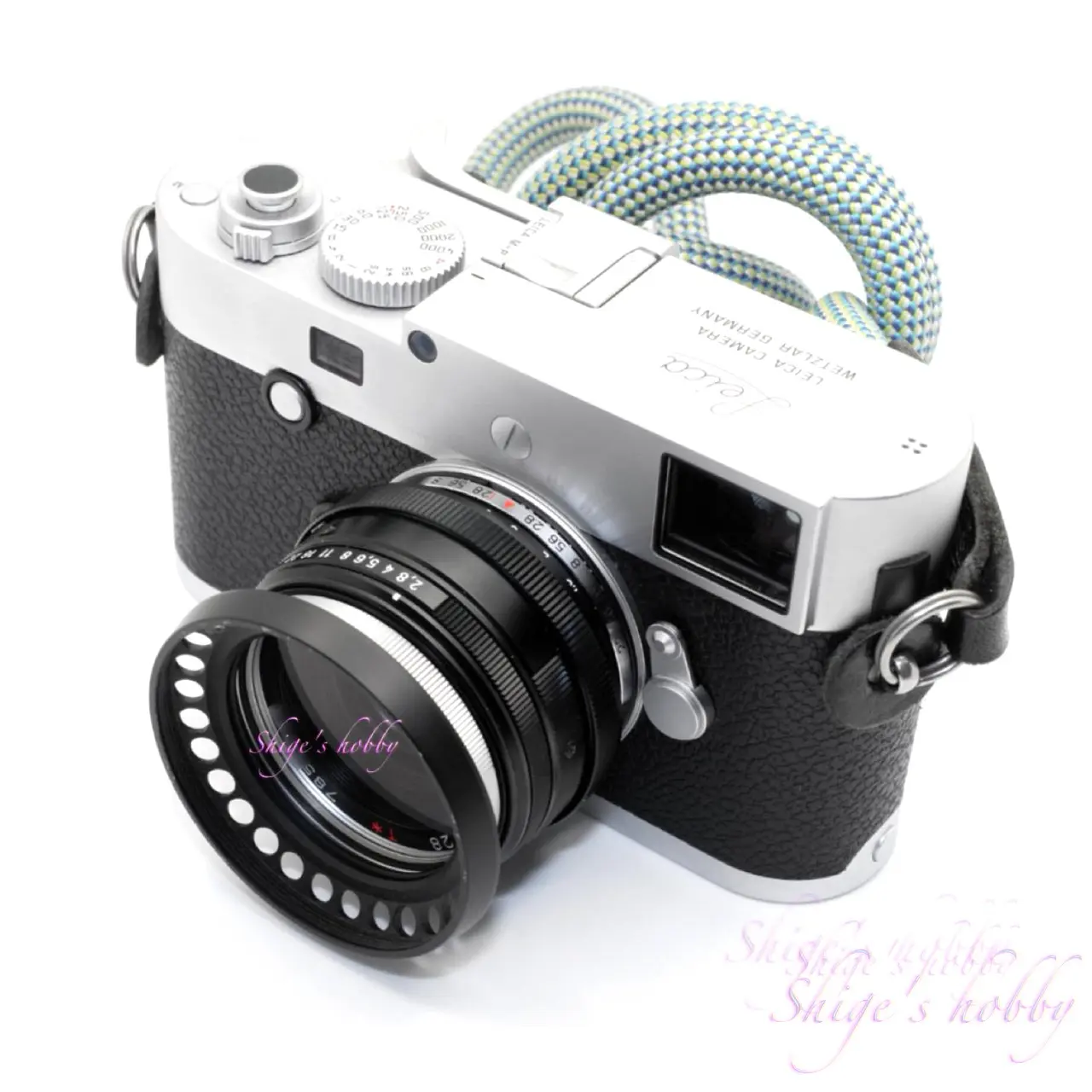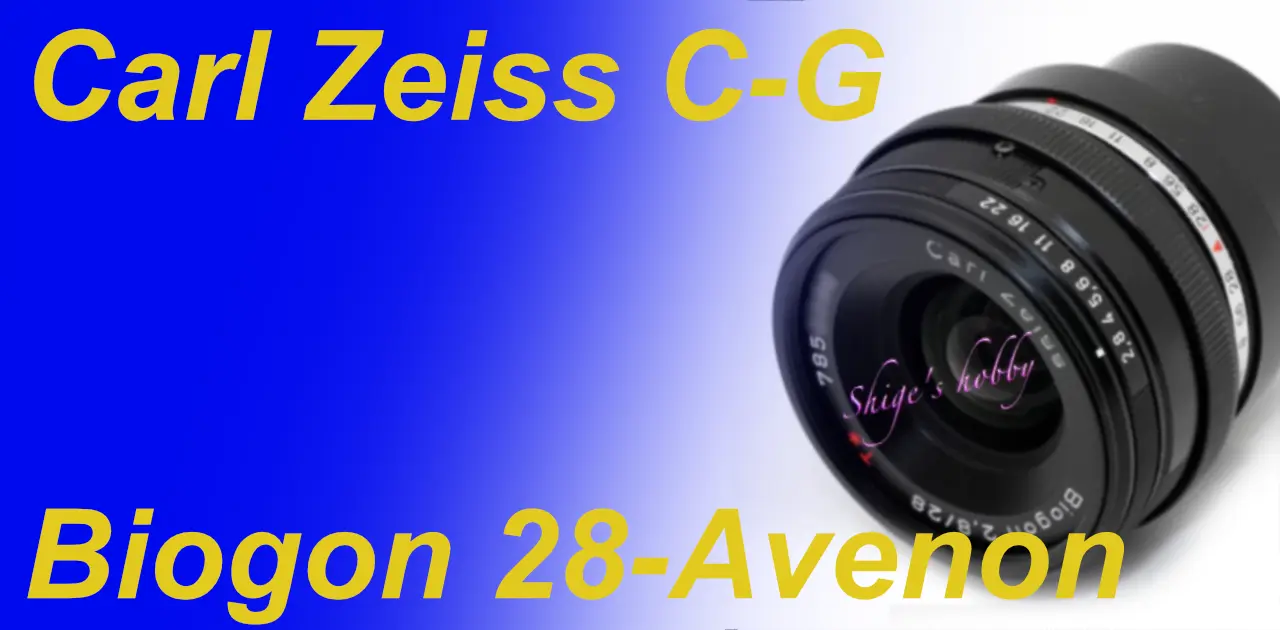Last updated on 2025-09-20
A review and sample photos of the CONTAX G Biogon 28mm F2.8 lens, modified by Avenon Optical to an L39 mount, used with digital and film cameras.
- Please see the disclaimer regarding advertising here.
- Italicized links in the text are advertisement links that take you to other sites.
Table of contents
Gallery
The following cameras and films were used to take the example photographs.
- HEXAR RF LIMITED +FUJIFILM FUJICOLOR 200
- Leica M-P typ 240
- SONY α7SII
Review


1.Overview
The CONTAX G Biogon 28mm F2.8 is an autofocus lens released by Kyocera along with the Contax G1 in 1994. Here, we introduce a lens that was modified by AVENON Optics to Leica L mount (linked to rangefinder camera rangefinder).
AVENON, which modified this lens, was founded around 1982 and is a company that no longer exists as of 2024.
AVENON has previously released two original lenses for the Leica L39 screw mount, the AVENON-SUPER-WIDE 21mm and the AVENON 28mm, as well as a Leica M mount pinhole lens, which are still traded on the second-hand market.
AVENON offered a service to convert CONTAX G mount 28mm lenses to M mount and modify them to link with Leica M type camera rangefinders. This lens is one of those modified lenses.
The feature of the Avenon modified lens is that it uses the original lens barrel almost as it is, while adding a Leica rangefinder linkage mechanism to the G lens. Therefore, the aperture ring is the same as the original and stops with a satisfying click every click stop. The aperture blades also follow the original six-blade design.
2.Usability
The CONTAX G Biogon 28mm F2.8 M-mount modified is modified to work with the rangefinder of a rangefinder camera, allowing you to focus using the double image in the viewfinder.
The minimum shooting distance of the modified lens has been changed from 0.5m to 0.8m. This lens was modified during the heyday of film cameras and the time when mirrorless cameras did not exist, and one of the reasons for this is that there was no point in extending the lens to a point where it was not linked to the Leica M-type rangefinder. Also, the reason why it cannot get as close as 0.7m, the limit of rangefinder linkage for the Leica M-type, is thought to be due to concerns about the shift in the shooting results due to parallax at 0.7m, or the lack of focus accuracy when close up.
When using a mirrorless camera with a minimum shooting distance of 0.8m, this problem can be solved by using an auxiliary helicoid.
Before I got the black version that I currently own, I had the champagne gold version of the lens.
The sad thing about the black Biogon 28mm is that the aperture range ring is silver and does not match the black body. If this part were a black plate with white text, I think the design would be more complete. The helicoid modified for manual focus is very smooth and has a moderate weight, so there is no problem with focusing.
The lens itself has a lens configuration unique to rangefinder cameras, where the rear lens goes into the film chamber, and is almost symmetrical with three elements in the front group and four in the rear group. This reduces distortion of the subject when shooting, and allows you to comfortably shoot lattice-shaped objects. However, the lens configuration and coating do not take into account the digital age, and depending on the camera sensor used, color casts may occur in the periphery of the captured image and purple fringes may appear on the edges of the subject.
Ms-optics, which has also modified other Contax G-mount lenses, has also modified the G Biogon 28mm. Since I obtained the modified Avenon lens first, I did not request a modification for the G Biogon 28mm.
3.Summary
In conclusion, to sum up the CONTAX G Biogon 28mm F2.8 M-mount conversion, the biggest advantage is that the focus position can be determined by the overlapping of the double image of a rangefinder camera. Another advantage is that the lens’ versatility is improved because there are more types of mount adapters for the M-mount than for the G-mount.
Specification and Competitor
In 2005, CARL Zeiss released the BIOGON ZM 28mm manufactured by Cosina. The lens length from the mount surface is 38mm, while the modified G Biogon 28mm has a lens length from the M mount surface of 31.7mm, making the modified G Biogon more compact.
The lens length changes depending on the flange back, so the flange back of the G mount is 29mm, and the lens length from the mount surface of the original G Biogon is 30.5mm, while the flange back of the Leica M mount is 27.8mm, which is 1.2mm longer, so it is 30.5mm + 1.2mm = 31.7mm.
The reason why the modified G Biogon is compact is because the front lens of the Biogon ZM is larger and the rear lens is slightly forward, as can be seen from the figure below (the image size has been adjusted to match the actual dimensions) created from the PDF officially distributed by Zeiss. This design is thought to aim to ensure sufficient peripheral light and reduce vignetting, and to improve telecentricity, which allows light that passes through the lens to enter the image sensor directly, by moving the rear lens forward.
The Biogon 28mm ZM, with its slightly moved forward rear lens, is presumably less likely to cause color casts in the peripheral areas.
- The lens construction diagrams are quoted from each company’s materials, and the sizes have been adjusted by us, so they are not exact.
| Item | CONTAX G Biogon 28mm F2.8 | BIOGON 28mm F2.8 ZM |
| focal length(mm) | 28 | 28 |
| Maximum aperture | 2.8 | 2.8 |
| Minimum aperture | 22 | 22 |
| Leaf blade | 6 | 10 |
| Lens configuration | 7 elements in 5 groups | 8 elements in 6 groups |
| Minimum distance(m) | 0.5 | 0.5 |
| Lens length(mm) | 30.5 | 38 |
| Lens max diameter(mm) | 56 | 53 |
| Filter type | 46 | 46 |
| Weight(g) | 150 | 220 |
| Hood | GG-1 | Carl Zeiss Lens Shade 25mm/28mm |
| Lens mount | CONTAX-G | ZM |
| Release date | 1994 | 2005.4.29 |
| Price | ¥57,000 | ¥95,000 |
Reference links
- Zeiss Biogon description page on Wikipedia
- Zeiss Photography Historical Products(There is a data sheet for the CONTAX G lenses in the middle of the linked page.)
Affiliate links
- CONTAX lens・Ads by Amazon
- Ms-optics・Ads by Amazon
- CONTAX books・Ads by Amazon
- CONTAX G BIOGON 28mm・Ads by Amazon

Update history
- 2024.8.1
- 2024.06.24:Update
- 2024.01.22:Update
- 2022.04.10:First post



Be First to Comment